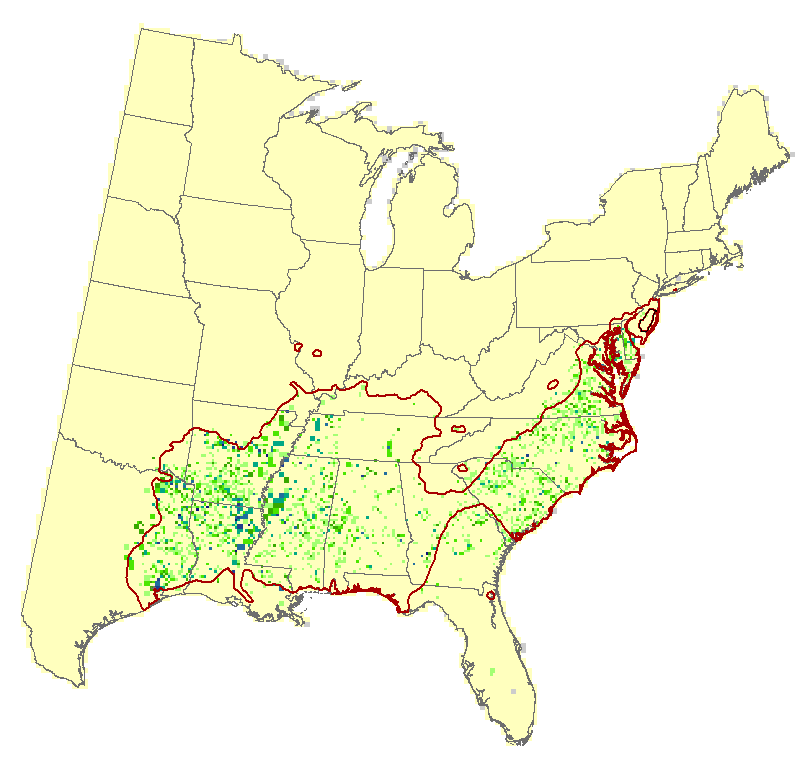willow oak (Quercus phellos)
Model Reliability: Low
| GCM SCENARIO | % Area Occ | Ave IV | Sum IV | Future/Current IV |
|---|---|---|---|---|
| Actual | 7.1 | 5 | 10366 | N/A |
| RFimp | 8.6 | 2.8 | 7153 | 0.69 |
| CCSM45 | 18.9 | 2.7 | 15189 | 2.12 |
| CCSM85 | 24.9 | 3 | 21627 | 3.02 |
| GFDL45 | 22.6 | 2.9 | 19445 | 2.72 |
| GFDL85 | 27.6 | 3 | 24546 | 3.43 |
| HAD45 | 24.3 | 3.2 | 22633 | 3.16 |
| HAD85 | 29.3 | 3.2 | 27402 | 3.83 |
| GCM45 | 25.3 | 2.6 | 19089 | 2.67 |
| GCM85 | 30.6 | 2.7 | 24527 | 3.43 |
Regional Summary Tree Tables
Summaries for tree species are available for a variety of geographies, in both PDF and Excel format. These summaries are based on Version 4 of the Climate Change Tree Atlas
Interpretation Guide
Willow oak is narrowly distributed (5.9% of area), sparse, low IV, but common in the southern US, and its low reliable model predicts an increase in suitable habitat (but classed as 'No change' because area <10%) with expansion up the eastern seaboard especially under RCP 4.5. The SHIFT model contrains some northward movement but there is some probability of the species moving up the eastern seaboard within 100 years. Its adaptability is medium and its overall capability to cope with climate change is fair. SHIFT models it to be a good infill species.
Family: Fagaceae
Guild: persistent, large-seeded, advance growthdependent
Functional Lifeform: large deciduous tree
| 4.7 | 0.63 |
| -0.01 |  |
MODFACs
What traits will impact willow oak's ability to adapt to climate change, and in what way?:
Primary Positive Traits
Seedling establishment Temperature gradient
Primary Negative Traits
Shade tolerance



